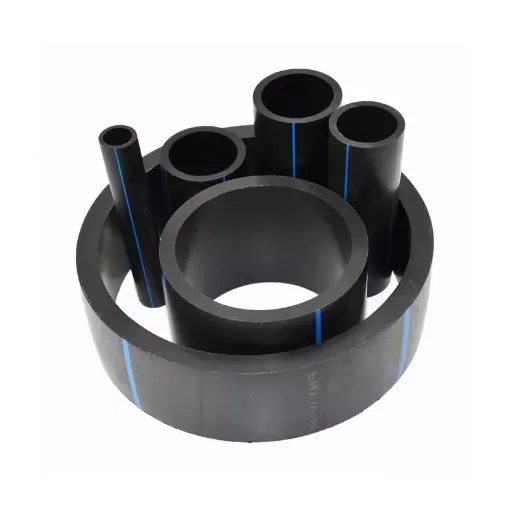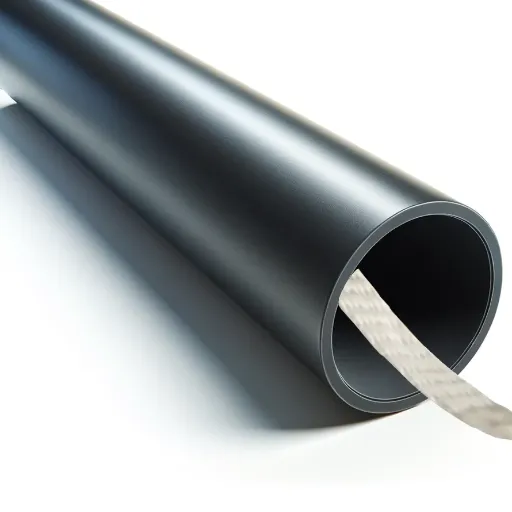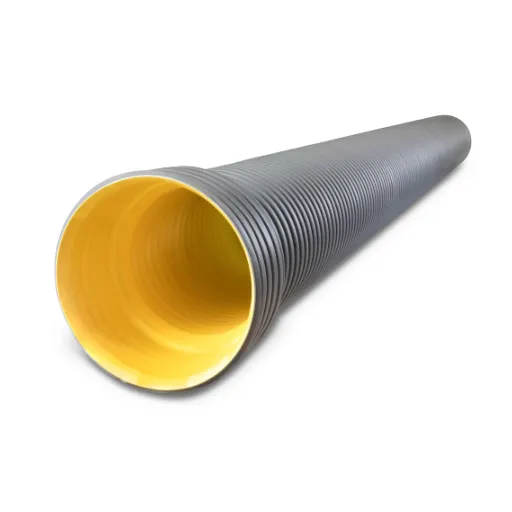High-density polyethylene (HDPE) pipes are widely used in various industries due to their flexibility, durability, and resistance to corrosion. However, when installing or bending HDPE piping systems, understanding the minimum bend radius is essential to preserve the pipe’s integrity and functionality. Improper bending can result in stress fractures, deformation, or even complete pipe failure, leading to costly repairs and downtime. This article will provide a comprehensive guide to calculating the minimum bend radius of HDPE pipes, explaining its importance and detailing the key factors that influence bending limits. Whether you’re an engineer, contractor, or anyone working with HDPE systems, this information will empower you to make informed decisions and ensure optimal performance in your installations.
What is the bend radius, and why is it important?
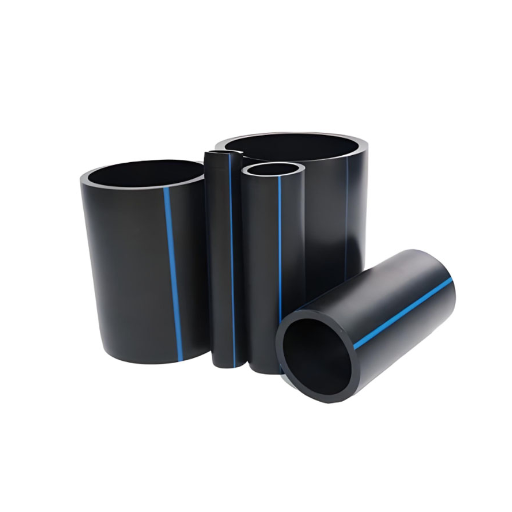
Understanding the bend radius of HDPE
The bend radius of HDPE, or high density polyethylene, is the smallest radius of a bend that a pipe can take without damaging it structurally or functionally. This is very important in pipeline design as any bend exceeding limits may result in kinking and cracking. With proper bend radius determination, it is ensured that full operational capabilities of the pipe are preserved under varying loads and ambient conditions.
Minimum bend radius is a factor of the diameter of the pipe in question as well as its material properties. Most industry accepted limits suggest HDPE pipes should not deviate from bend radii of 20 to 30 times the pipe’s outer diameter. Such compliance makes it possible to maintain internal and external pressure equilibrium while still yielding flexible enough arrangement to navigate other obstacles within the environment. For more complex projects involving sharper bends, supporting segmented fittings may be needed to prevent pressure from damaging the pipe.
Following the recommended guidelines from the industry and the manufacturer when designing bends on HDPE pipes is crucial. Not following these guidelines may lead to failures too soon, add to maintenance intervals, or make the system inefficient. Proper handling of installation improves the life cycle of the installation and reduces risks arising out of improper design and installation.
The role of pipe diameter in determining bend radius
Pipe diameter is a vital consideration while calculating the minimum allowable bend radius for HDPE pipes. In general, larger pipe diameters will need bigger bend radii because of internal stress alleviation during bending. This is because bending puts strain on both sides of a pipe—the inner and outer. In this case, the inner side complains and gets compressed while the outer side stretches. If the bend radius is too small, these stresses can rupture the structural integrity, so to say, “the very foundation” of the pipe.
Industry standards, on the other hand, suggest thermoplastic materials such as HDPE spend between 20 to 25 times the pipe’s outer diameter (OD) as the minimum bend radius. So, for a thermoplastic HDPE pipe whose outer diameter measures 10 inches, it should have a minimum bend radius of 200 to 250 inches. Sticking to these standards is essential, as other forces, pressure, or thermal cycling, can cause deformation, cracking, or buckling. Additionally, the specific bend radius tends to differ due to other variables design wall thickness, operational pressure, and the temperature during installation, which must be taken into account during design.
Following societal norms ensures even application of stress and maximum efficiency for the pipeline system. Today’s design norms and simulations put forth all the information that an engineer needs and, therefore, highlights the need of the alignment of the pipe diameter to the bend radius standards in damping the longitudinal system resonance for enduring reliability.
Impact on piping system performance
The importance of achieving high performance in piping systems, about design and material selection, cannot be overstated. Important performance criteria like fluid flow, pressure loss, and thermal expansion are directly affected by how closely the Specifications of the piping components are aligned with working conditions. For example, insufficient consideration of the thickness of the pipe wall or the material strength of the components under dangerously high pressures can cause highly localized stress concentration, which can result in mechanical failure.
Modern Computational Fluid Dynamics (CFD) software aids in advancing the designs of pipe networks by modeling real-world conditions. Systems designed and optimized using CFD are estimated to incur up to 15% lower energy losses, which is a substantial reduction considering the expenses during the entire lifecycle of the system, as stated by recent studies.
Furthermore, the progress made in non-destructive testing (NDT) methods such as ultrasonic Piping Inspection (UFI) and radiographic inspections bolsters system reliability even more. These methods assist in finding potential defects like pitting, cracks, and weld flaws that could jeopardize the system’s structural integrity well before they become issues. Collectively, these technologies and strategies bolster the integrity of the piping system and provide the dependability needed to withstand the harsh conditions of today’s industrial use.
How to calculate the bend radius for HDPE pipe
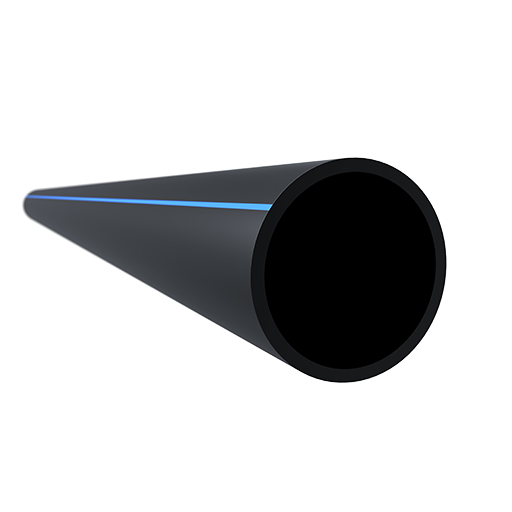
Formula to calculate the bend radius
The bend radius of HDPE (High-Density Polyethylene) pipe can be calculated using the formula:
Bend Radius (R) = Pipe Outside Diameter (OD) × Minimum Bend Ratio
“Pipe Outside Diameter (OD)” refers to the external diameter of the pipe, which is measured either in inches or millimeters.
“Minimum Bend Ratio” defines a value that pertains to the design and material of the pipe, often determined by the manufacturer. For standard HDPE pipe, the minimum bend ratio is given between 20 and 25, depending on the grade and specification of the pipe.
It is crucial to these specified values in order to avoid deformation of the pipe as well as excessive stress which could lead to long term material damage. The recommended bend radius is critical, as deviations can negatively impact flow efficiency or lead to the failure of the pipe.
Moreover, with the use of the newest imaging and simulations technologies, one can create an accurate representation of the pipe’s stress distribution when bending which assists in meeting compliance standards and avoiding the inaccuracies of manual calculations.
Factors affecting the minimum bend radius
Minimum bend radius of a pipe is determined by very important factors such as pipe material, diameter, wall thickness, temperature and external forces applied to the pipe.
- Material Properties: Bend flexibility of a pipe depends primarily on the pipe’s material. For example, HDPE is more ductile than rigid PVC and thus has a smaller bend radius without damage.
- Pipe Diameter: With increase in diameter of the pipe, the minimum bend radius also increases. For low- pressured applications, this is not a critical factor, but is very important to high-pressure applications.
- Wall Thickness: With the increase in thickness of the wall, the amount of deformation it can cause also increases. This leads to better resistance against a tighter bend radius. Thin walls are easier to bend and are more prone to deform due to buckling or kinking.
- Temperature: Heat increases bend ability of a material by reducing stiff, while also creating risk if not well controlled. Cold on the other hand makes materials brittle which increases chances of structural failure when bent.
- External Forces and operational pressures: Any force applied externally, accounted for in the bend radius calculation, needs to be adjusted to minimize stress, which may lower the amount of tightness the angle can achieve while still making the pipe resist.
The use of more sophisticated computing technologies and finite element analysis (FEA) that permit engineers to simulate stress behaviors has enhanced the attempts to reduce the inconsistencies in bend radius calculation.
What are the material properties of HDPE that affect its bending?
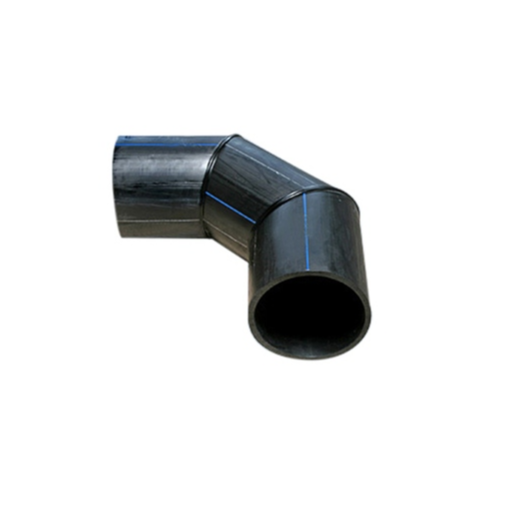
Flexibility of high-density polyethylene
Due to its semi-crystalline structure, High-density polyethylene (HDPE) is quite flexible and can deform when stressed without undergoing permanent damage. Its flexibility is highly dependent on the molecular weight and density of the material, as well as the degree of branching in the polymer chains. These properties of HDPE are beneficial in piping system, where the material is required to bend around small-radius during varying stress and still maintain structural integrity.
As per research, the flexural modulus of HDPE usually lies within the range of 0.8 to 1.5 GPa, depending on the specific grade and formulation. The material also has an elongation at break value which is greater than 600%, indicating that it can undergo extreme stretching without failing. Under bending stress, HDPE demonstrates excellent shape recovery. If the force is removed, the material will return to its original shape as long as the stress varies below the yield strength limit. Such properties make HDPE the material of choice when seeking lightweight, durable, and adaptable materials.
Engineers’ predictive accuracy regarding bending performance is improved through understanding these properties, along with sophisticated testing techniques like dynamic mechanical analysis (DMA). This thorough level of analysis guarantees meeting the requirements of the industry and HDPE’s optimization in vital infrastructure and industrial applications.
Influence of wall thickness and pipe’s outside diameter
The interplay of wall thickness and outside diameter of a high-density polyethylene (HDPE) pipe determines its structural performance. These two factors are captured under the Standard Dimension Ratio (SDR), which is found by taking the outside diameter and dividing it by the wall thickness. This ratio assists in estimating pressure rating, stiffness, and reliability under various load conditions alongside the pipe’s pressure rating.
Pipes with lower SDR values have thicker walls in comparison to diameter; meaning the pipes have increased pressure resistance, enhanced durability, and enhanced ruptured strength. Thinner wall performance is suitable for low-pressure environments where flexibility is preferred. This information proves crucial to engineers trying to design systems aimed at municipal water supply, gas pipeline systems, or irrigation systems.
Also noted is how wall thickness affects the performance of the pipe under sustained external static loads such as soil weight or other active loads. The greater wall thickness of HDPE pipes enables superior deformation resistance under extreme operational conditions, prolonging operational life while lowering maintenance costs. Outside pipe diameter also greatly influences the range of fluid flow; Greater volumetric flow rates are attainable with a larger pipe diameter, but will require structural support depending on the operational pressure in the system.
With advances in computing, engineers are now able to predictively simulate the behavior of piping systems under different scenarios, thereby lessening the reliance on physical tests and expediting overall project deadlines.
Comparison with other materials like PVC
While comparing metal piping to other materials such as PVC, some primary differences stand out: mechanical properties, thermal resistance, and chemical compatibility. The advantages that ensure the widespread usage of polyvinyl chloride (PVC) pipes are their lightweight structure, price, and corrosion resistance. However, the mechanical strength and thermal resistance of PVC pipes are much lower than those of metallic options, like steel or copper. For example, PVC pipes can only withstand a maximum service temperature of about 60°C or 140 °F, where thermal deformation starts compromising structural integrity, while metal pipes can withstand much higher operational temperatures.
In addition, PVC has excellent resistance to a wide array of chemicals, which makes it useful in industrial applications as well as in wastewater applications. However, it is not as useful in high-pressure scenarios. While the tensile strength of PVC is around 7,500 to 8,000 psi, steel easily exceeds 70,000 psi, depending on the grade. PVC also has limited durability in UV-exposed environments without protective coatings, as prolonged exposure to sunlight catalyzes degradation.
Advancements like chlorinated PVC (CPVC) have improved thermal resistance and hot water system compatibility. However, it still fails in comparison to the versatility and longevity of metals in harsh industrial settings. Thus, the final decision comes down to the application’s temperature, pressure, and corrosive element thresholds – each material possessing its own pros and cons.
What is the minimum bend radius for HDPE pipe during installation?
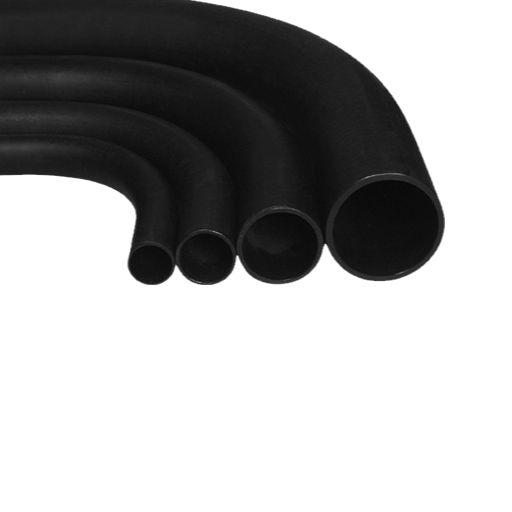
Standard practices for pipe installation
The standards surrounding the installation of high-density polyethylene (HDPE) pipes must be stringently followed if structural integrity, along with long-term performance, is to be expected. Key among the critical factors is the minimum bend radius, which is the ‘safest’ curve a pipe can take without sustaining damage. Usually calculated as multiples of the pipe’s outer diameter (OD), the minimum bend radius is considered to be 20 to 25 times the outer diameter for unrestricted bending. This value can change because of other factors such as pipe wall thickness, temperature, and other external factors.
The exact preparation of trench for backfilling is the most critical to HDPE pipes. Trenches must be free of sharp objects that may cause damage to the pipe and must contain clean compact sand or soil free of debris for the pipe to rest on. Layers of backfilling need to be compacted around the pipe so that there are no slip or deformation misalignments.
Additionally, one key factor to consider is the thermal expansion and contraction properties of the HDPE material. Adequate allowances must be provided for both longitudinal as well as lateral movement, particularly in zones where the temperature changes drastically. Also, fusion joints, which include butt or electrofusion welding, should be performed in accordance with manufacturer’s and industry standards to ensure leak-proof connections as well as uniformity throughout the pipeline.
Adhering to these recommended practices will aid in achieving the desired durability and operational reliability in HDPE pipe installations mechanical failure risks, and efficiency during the entire operational life of the pipeline.
Short-term vs. long-term bend radius
The bend radius of high-density polyethylene (HDPE) pipes is a crucial consideration for intact structure and operational functionality. Short-term bend radius describes the absolute minimum curvature the pipe can sustain temporarily during transport or workflow stages without incurring any damage, deformational or otherwise. When described briefly, the short-term bend radius is typically tighter because of the flexibility pipes possess when periodically stressed over a short duration. For HDPE pipes, this is oftentimes calculated as a multiple of the pipe’s outer diameter, with general recommendations of 20 to 25 times the nominal diameter for lower density pipes, increasing with the material density and diameter of the pipes.
On the opposite end, long-term bend radius applies to the curvature of the pipe during extended periods of operational, relatively stable conditions, sustaining an internal stress that can cause material creep or fatigue over time. Typical industry practice for chronic external mechanical and environmental stress marks a standardmore conservative radius of 100 to 120 times the pipe’s outer diameter. Additionally, soil temperature movements and consistent pressure dramatically increase the need to adhere to these standard guidelines.
For example, during the installation of an HDPE pipe with nominal diameter of ten inches, short term bend radius may be between two hundred to two hundred and fifty inches. However, to maintain the structural integrity of the pipe and avoid premature failure, long term bend radius could increase to one thousand to one thousand two hundred inches. Observing these limits allows design and construction professionals to maximize installation adaptability while safeguarding long-term reliability and meeting industry requirements.
Guidelines for trenchless installation
Trenchless techniques like HDD, pipe bursting, and microtunneling have an operational design within which industry practices must be observed, impacting both efficiency and reliability. During the installation, the soil type must be evaluated since it affects the bore’s stability as well as the pipe’s performance. For instance, loose and granular soils may pose problems during the bore process and require additional support so as not to collapse or become misaligned.
For each step of the installation, it is important to control the pulling forces as they relate to the pipeline material strain. With HDPE pipes, the maximum tensile pull required cannot pass the SPF limit, which is determined by the manufacturer based on the material grade and wall thickness. Also, the ratio of the constituents of the drilling fluid must be maintained for stability of the borehole, friction reduction, and cooling of the drill rods.
Another major factor to focus on is the application of correct anti-buoyancy measures while placing pipes beneath the groundwater table. Without adequate weighting or anchoring means, pipeline buoyancy may create realignment problems or damage realignment. In addition, correct electronic monitoring during the trenchless installation methods is highly important in detecting any changes in the planned bore path because they can be corrected immediately.
Lastly, compliance with other relevant criteria, likewise, the compliance with ASTM F1962 concerning the installation of polyethene pipes by horizontal directional drilling (HDD) ensure adherence to the standards while protecting the integrity of the pipe system and the environment.
How can you maintain allowable bend radius in HDPE piping systems?
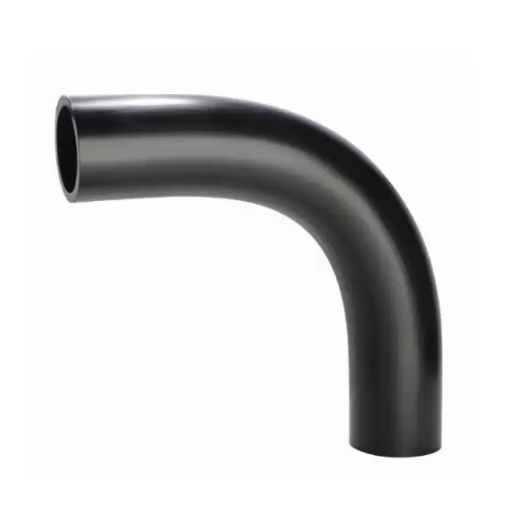
Preventing bending to a tighter radius
Maintaining the allowable bend radius in HDPE piping systems bend radii is important to avoid structural damage and ensure long-term HDPE reliability. To avoid bending the pipe to a tighter radius than specified, several methods can be applied. First, during the installation phase, the use of support devices like rollers, tensioners, or bending guides must be set up properly so that stress is not concentrated in one area, which might lead to sharp bends. Second, the manufacturer’s revision concerning the minimum bend radius permitted must be checked. It usually is a function of the pipe diameter and material grade. For example, an HDPE pipe of high density or SDR (Standard Dimension Ratio) may have a less flexible bend radius than other pipes.
In addition, avoiding unnecessary sharp curves begins with planning the routing of the pipe system. Engineers should design for gradual bends ahead of time and analyze terrain obstacles to prevent excessive flex during the installation phase. Field crews must be able to identify where excessive pulling force might create tighter bends, such as during pulling operations, and mitigate this through carefully controlled adjustments through pull…adjust through pulling controls.
Real-time monitoring is made possible by sophisticated pipeline installation software or sensors during Horizontal Directional Drilling (HDD) and other trenchless operations, further ensuring compliance with the specified radius by stress identification in real-time.
Ensuring the pipe can be bent without damage
The ability to properly install HDPE (High-Density Polyethylene) pipes without damaging them depends on carefully observed guidelines based on material properties and industry requirements. The first factor of concern is the pipe’s Minimum Bend Radius (MBR), which is usually a function of the pipe’s outer diameter and its material flexibility. For HDPE pipes, the industry best practice guidelines suggest a bending radius of 20 to 30 times the pipe’s outer diameter based on the DR (Dimension Ratio) as well as the temperature of the pipe. If this radius is exceeded, then undue stress is bound to be introduced; this stress can lead to kinking, buckling, or, in some cases, microfractures on the pipe wall.
Furthermore, real-time monitoring of Ultra High Frequency (UHF) technologies, such as strain gauge or digital sensors, can be utilized at the time of installation to check how the stress is distributed along the curve of the pipe. This approach allows for data-driven decisions and enhances the overall accuracy when it comes to enforcing compliance with bending tolerances while minimizing damage from uneven forces and mishandling. Furthermore, temperature also needs to be accounted for; although HDPE pipes become more flexible at elevated ambient temperatures, they can be more prone to deforming under excessive mechanical strain.
To guarantee durability, compliance with industry norms, is crucial. Utilization of these standards alongside modern engineering software and field technologies allows operators to model bend scenarios, optimize alignment, and confirm that alignment and bending activities are safely within operational limits.
Role of fitting and joints in maintaining the specified radius
Fittings and joints play a significant role in respecting the bending radius limits in pipeline systems. Not only do these parts act an as junction but also as supports within the limit of curvature. More complex fittings, such as elbows and couplings, are made to minimize turbulence and evenly spread the forces in the pipeline, which also minimize mechanical loads from localized stress that could threaten the system’s integrity.
Joint fittings, that are welded, flanged, or compression based, are produced with great precision due to the needs of the pipe’s material and expected mechanical forces. As another example, segmented elbow fittings help with tight radius bends by controlling the radius with precision. Through simulations and actual tests, the manufacturers have fine-tuned these joints and fittings so that they are capable of enduring severe pressure and weather conditions while maintaining radius control and system integrity.
The addition of materials like ductile iron, high-strength polymer composites, or reinforcement linings also improves these components’ functions by making sure there is no significant distortion during installation or lengthy use. Self aligning features, gasketed systems, and other recent fitting and joint advancement innovations are also contributing to the reduction of the total error concerning the specified bending radius. Such compatibility guarantees that pipeline systems remain reliable and safe over a broad range of uses, protecting everything from drinking water to critical energy transport networks.
References
Frequently Asked Questions (FAQ)
Q: What is the minimum long-term bend radius for HDPE pipe?
A: The minimum long-term bend radius for HDPE pipe is typically 20 to 25 times the diameter of the pipe. This allows the pipe to be bent to a radius while avoiding damage and ensuring the longevity and performance of the installation.
Q: How do you calculate the minimum bend radius of HDPE pipe?
A: To calculate the minimum bend radius of HDPE pipe, you can use the following formula: Minimum Bend Radius = 20 x Diameter of the Pipe. This calculation helps ensure proper installation and the pipe’s ability to bend without compromising its integrity.
Q: Why is understanding the bend radius of an HDPE pipe important?
A: Understanding the bend radius of an HDPE pipe is crucial because it helps avoid obstacles and ensures the pipe’s flexibility and durability during handling and installation. It also prevents resistance to kinking and supports the pipe in changes in direction.
Q: What factors influence the bend radius of HDPE pipe?
A: The bend radius of HDPE pipe is influenced by the dimension ratio, which is the thickness relative to its diameter, and the flexibility of HDPE material. These factors determine how tightly the pipe can be bent without damage.
Q: Can HDPE pipes be bent to a smaller radius than recommended?
A: Although HDPE pipes can be bent, bending them to a smaller radius than recommended can lead to potential damage, reducing their longevity and performance. It’s essential to adhere to the recommended minimum bend radius.
Q: What is the difference between long-term and short-term bend radius for HDPE?
A: The long-term bend radius for HDPE is designed for permanent installations, ensuring durability over time, while the short-term bend radius may be used during temporary handling or installation processes where flexibility is briefly needed.
Q: How does the flexibility of HDPE impact its installation process?
A: The flexibility of HDPE allows it to be installed with fewer fittings, reducing the need for joints and supports. This flexibility aids in avoiding obstacles and adjusting to changes in direction, making it a preferred choice for various applications.
Q: What should be considered when installing HDPE piping?
A: When installing HDPE piping, it’s important to consider the minimum bend radius, the environment where it will be installed, and any potential obstacles. Proper installation ensures the pipe’s resistance to kinking and supports its long-term use.
Q: Are there any special considerations for legacy pipes when calculating bend radius?
A: For legacy pipes, it is crucial to verify material properties and dimensions, as older pipes might have different specifications. Ensuring they meet current standards for flexibility and durability is essential for maintaining performance.
Q: How does the minimum bend radius affect the handling and installation of HDPE pipes?
A: The minimum bend radius affects handling and installation by determining how the pipe may be maneuvered around obstacles and supports. Adhering to this radius ensures that the pipe maintains its structural integrity and performance capabilities.




